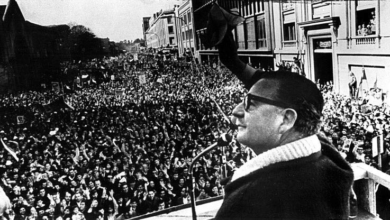School of the Americas Watch held their third annual border encuentro in Nogales, Arizona this November. SOA Watch formed after training manuals exposed the school’s roll in teaching torture and extortion techniques that directly led to the murders of six Jesuit priests and two women at the Central American University in El Salvador. The School of the Americas, a key instrument of U.S. imperialism, has graduated oppressors from several other Latin American countries – most notably from Guatemala, Mexico, Panama and Colombia — who have engaged in many forms of terrorism against progressive movements across Latin America.
The School of the Americas became so notorious by name that the U.S. government renamed it the Western Hemisphere Institute for Security Cooperation (WHINSEC), located in Fort Benning Georgia. SOA Watch seeks justice and builds alliances with progressive groups who share the same goals, and this year focused on support for the refugee caravan. The U.S. government cruelly refuses to accept the caravan despite being in large part responsible for the exodus as a result of its support for the 2009 right-wing coup in Honduras.
The commander and chief of the military in Honduras and the head of the air force were both SOA graduates who in 2009 spearheaded the coup that ousted the democratically elected president Manuel Zelaya. Since then, many trade unionists, environmentalists and other activists have been killed or jailed and dissent has been met with repression. The 2009 coup is only the latest intervention in Honduras in a long line of U.S. meddling dating back to the early 20th century.
The coalition of groups began its march to the Nogales Border around 7:30 a.m., led by Veterans for Peace. Activists mobilized on both sides of the Nogales border fence. Most of the speakers and attendees were on the Mexican side of the border.
Maria Luisa was the first speaker at the event, who fled the armed conflict in Guatemala with her family after the disappearance of her father in 1983. She said to the crowd:
“Most of you may ask why we are here at the border and not at Fort Benning where we have been following the SOA that has trained 80,000 soldiers, policemen and now border patrol, and is financed with U.S. tax dollars. Well, the school is not just a school, it’s an idea of how to dominate, intimidate and silence. Over the few years it has replicated and multiplied itself in terrible ways with its political objectives, military objectives and economic objectives. Since 1990 we denounced the crimes against humanity that have been committed by the school, we have asked to educate ourselves, we almost got to the point of closing the school through a grassroots movement pressuring Congress. We have been following the memories, the truth, justice and the struggle of families and survivors in Latin America like Argentina, Chile, Guatemala … they have showed something very important, that we can condemn SOA and that the impossible only takes a little bit longer.”
Mark Kroger, a Franciscan Friar among the crowd who came down from Sacramento, Calif. to join his friend, a friar from Nogales, to support the border encuentro said, “My biggest dream is to have no wall, no borders … I’m here to keep the awareness going of what’s really happening at the border and all that our government is involved in. There is strength in numbers and diversity.”
A conference featuring many speakers and workshops was also held as part of the encuentro, where participants traced the roots of injustices facing Latin America to U.S. imperialism. Honduran refugees, victims of border patrol violence and those affected by the School of the Americas have all been impacted by U.S. intervention in Latin America. The encuentro also demonstrates the solidarity that is needed to end imperialism.






